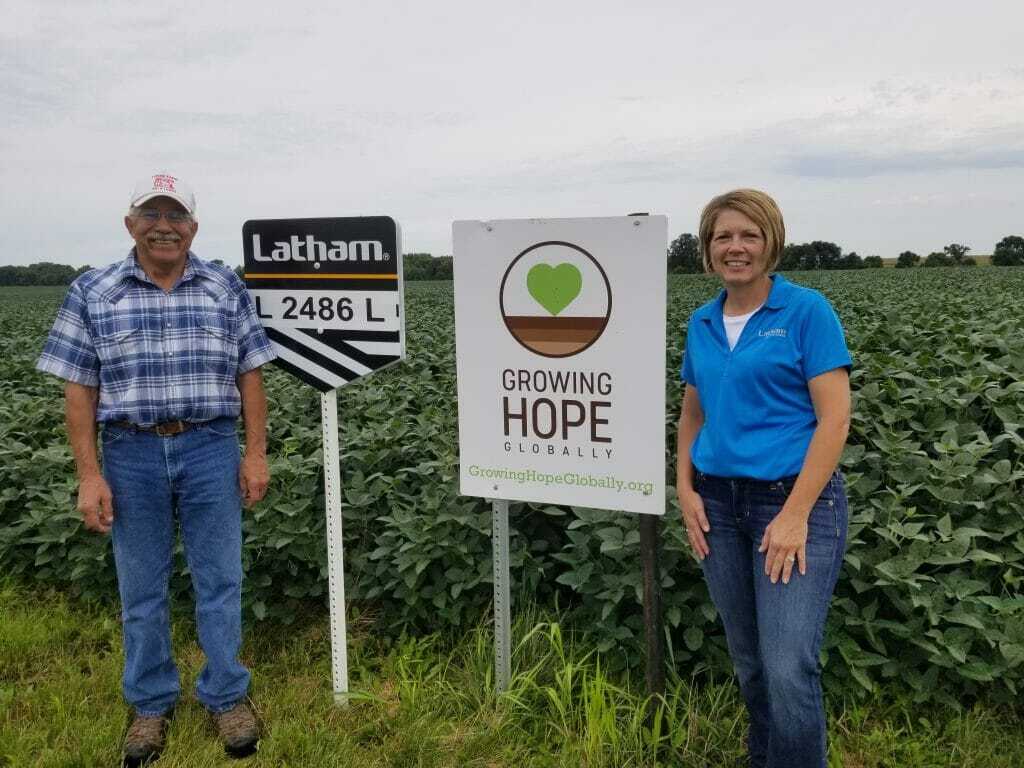Local Partners Sought for “Growing Hope Globally”
People in small U.S. communities are making a big impact in the lives of others around the globe.
“Can you imagine not being able to provide for your family?” asks Ted Pitzenberger of Dougherty, Iowa, who has been involved in a U.S. Growing Project through Growing Hope Globally (GHG) for the past 15 years. “We hope to help people, who are chronically hungry, provide for their families and for others in their community.”
Through Growing Hope Globally, formerly known as Foods Resource Bank, U.S. farmers like Ted raise money to support those in developing nations how to grow food through sustainable, small-scale, agriculture production projects.
Ted became an active member of a GHG Committee at the request of Darrell Needham of Greene, Iowa. Other GHG Committee members from the Greene community include Dallas Foster, Sylvia Hawker, Ron Kester, Chuck and Carolyn Thompson, Matt Miller and Duane Smith. The committee, along with businesses and area churches, raise approximately $8,000 annually through donations and raising crops that are then sold with the proceeds benefiting GHG.
This year Ted, who has been a Latham® production grower for about 40 years, is donating all the soybeans produced on a 12-acre field that he planted to Latham’s L 2486 L. Latham Hi-Tech Seeds, through its Community Support program, donated the seed for this project.
“This particular field means a lot to me because I’ve been involved with planting and harvest here since I was a kid,” says Ted, whose grandparents, Ted and Babe Boom, bought this farmland in 1942. “My grandfather was a seed dealer, and I would go to workshops and county fairs with him. When my brother and I were in 7th and 8th grade, he would come to school and get us, and we’d help him unload a seed truck. I’d get out of school in the fall to help him harvest. I’m sure he’d honored to see how much this field is helping others now.”
Farmers, landowners and others donate their time, expertise and equipment to financially support 169 Growing Projects nationwide that, in turn, provide a large percentage of revenue for Growing Hope Globally. The organization prides itself in efficiency; only about 11% of the total funds are used for administration. Eighty-nine percent of the funding goes directly to the training programs and projects that help establish sustainable agricultural methods overseas.
“It’s amazing to see farmers and others in rural communities get involved and provide a hand up to help people around the world become food independent,” says Ron De Weerd, regional director for Growing Hope Globally. “In its 20-year existence, Growing Hope Globally has supported 2 million people becoming free from chronic hunger. It only takes about $55 for us to provide four years of materials and training to have one farmer in a developing country become free from depending on others or migration for sufficient food and nutrition.”
An example of the training provided through Growing Hope Globally is gardening and cooking classes, which have helped reduce the number of Honduran children that suffer from nutritional deficiencies. Children also are planting small gardens next to their parents’ larger ones. The gardens provide for these families and sometimes produce extra produce they can sell.
Today we’re celebrating the success of Growing Hope Globally by sharing a recipe the organization provided for carrot fritters.
“These were delicious, and it was fun to make these in the village!” says Ron De Weerd, regional manager, Growing Hope Globally.
Carrot Fritter
Ingredients
- 4 Carrots, shaved or julienne
- 1 onion sliced thinly
- 1 bunch green onions, chopped finely
- 1 cup all-purpose flour
- 1 teaspoon salt
- 1/4 teaspoon pepper
- 2 eggs
- 2 cups cooking oil
Instructions
- In a medium bowl, combine carrots, onion, green onion, flour, salt, pepper, and egg; mix well.
- Heat oil to 375 degrees.
- Drop small balls about 1/8 cup of carrot & onion batter.
- Fry for 3-5 minutes, flipping when brown.
- Dry on a paper towel to absorb excess oil.
